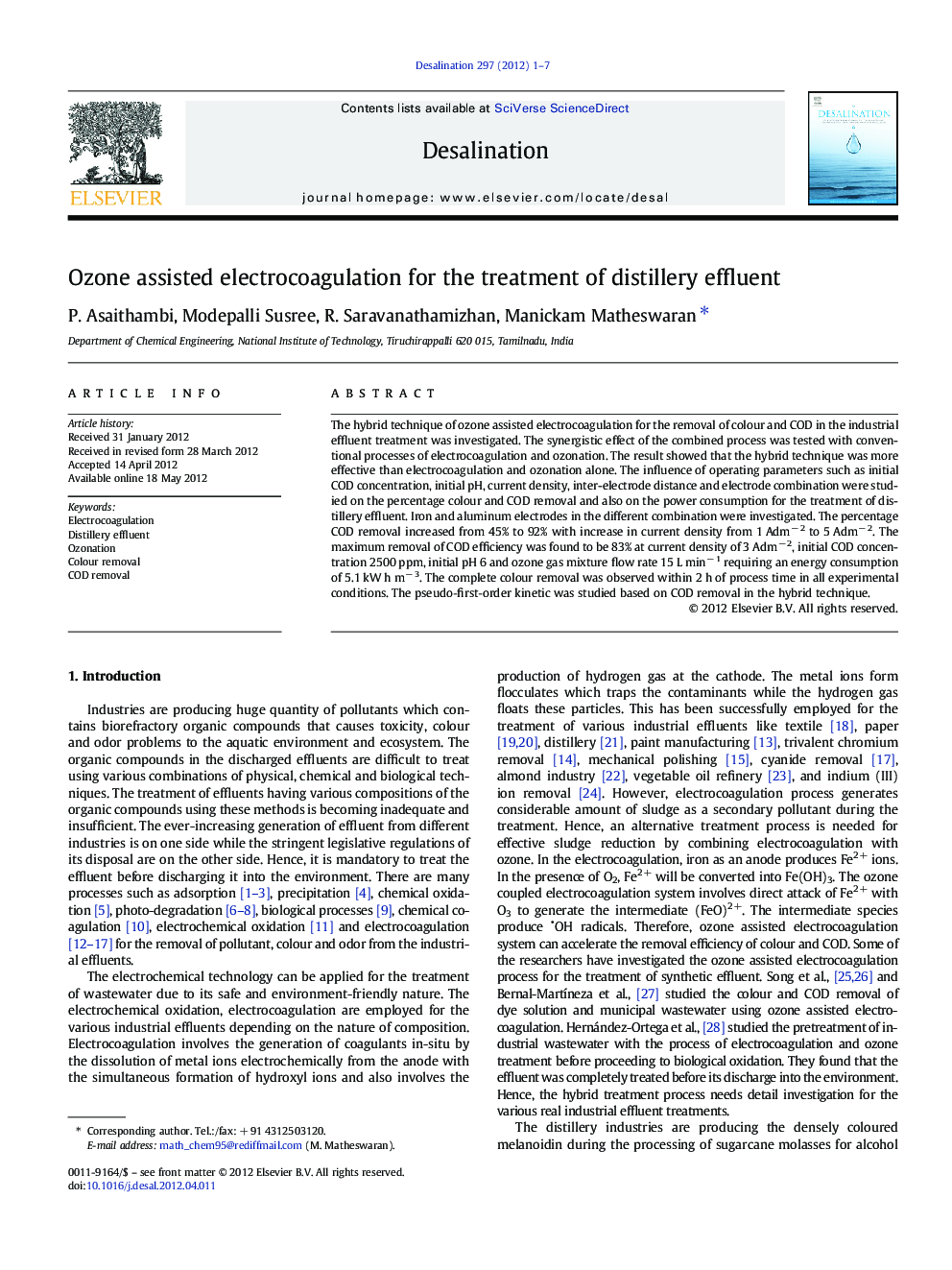| Article ID | Journal | Published Year | Pages | File Type |
|---|---|---|---|---|
| 624276 | Desalination | 2012 | 7 Pages |
The hybrid technique of ozone assisted electrocoagulation for the removal of colour and COD in the industrial effluent treatment was investigated. The synergistic effect of the combined process was tested with conventional processes of electrocoagulation and ozonation. The result showed that the hybrid technique was more effective than electrocoagulation and ozonation alone. The influence of operating parameters such as initial COD concentration, initial pH, current density, inter-electrode distance and electrode combination were studied on the percentage colour and COD removal and also on the power consumption for the treatment of distillery effluent. Iron and aluminum electrodes in the different combination were investigated. The percentage COD removal increased from 45% to 92% with increase in current density from 1 Adm− 2 to 5 Adm− 2. The maximum removal of COD efficiency was found to be 83% at current density of 3 Adm− 2, initial COD concentration 2500 ppm, initial pH 6 and ozone gas mixture flow rate 15 L min− 1 requiring an energy consumption of 5.1 kW h m− 3. The complete colour removal was observed within 2 h of process time in all experimental conditions. The pseudo‐first‐order kinetic was studied based on COD removal in the hybrid technique.
► Ozone assisted electrocoagulation for the treatment of industrial effluent. ► Hybrid technique for the removal of colour and COD has been investigated. ► Ozone assisted EC was more effective than electrocoagulation and ozonation alone. ► The influence of operating parameters on removal of colour and COD has been studied. ► All experimental conditions complete colour removal was observed within 2 h.
